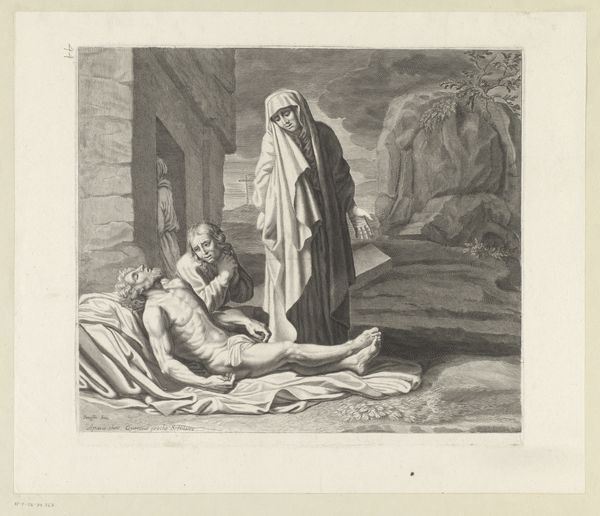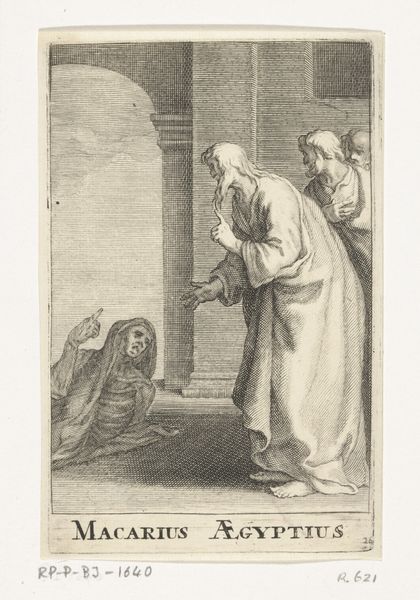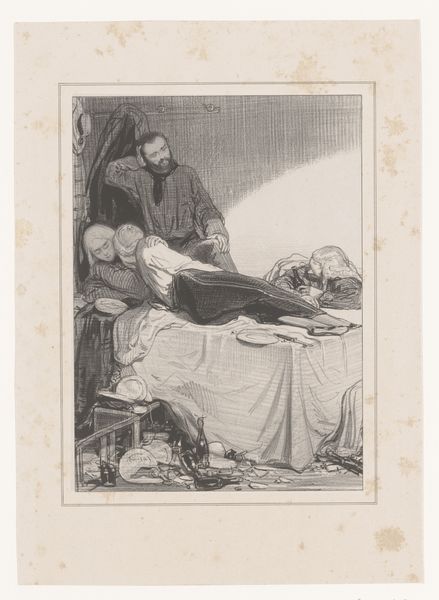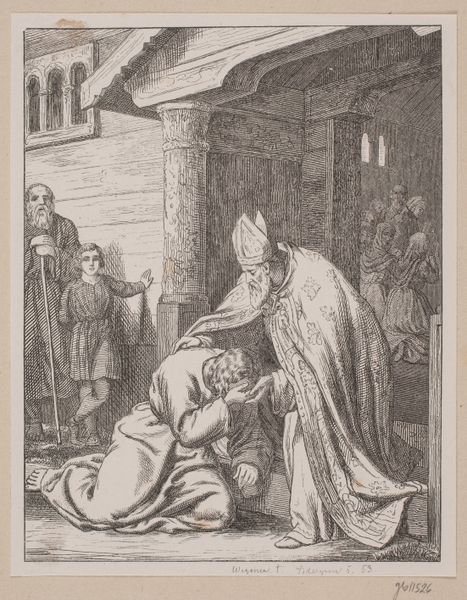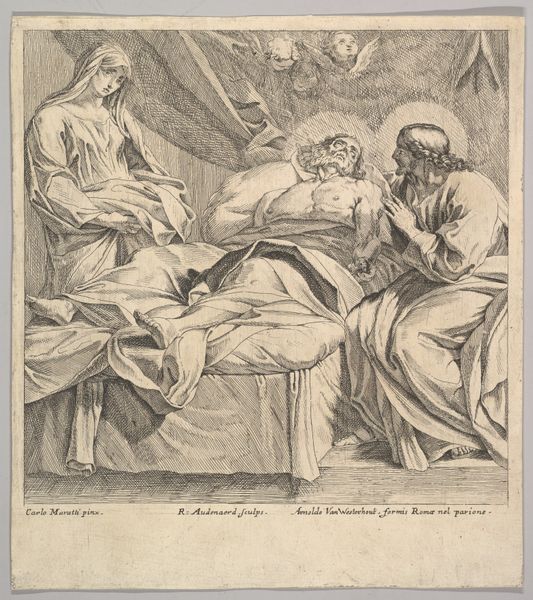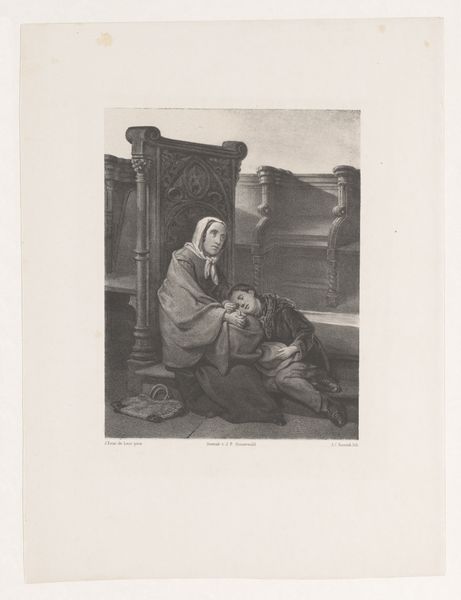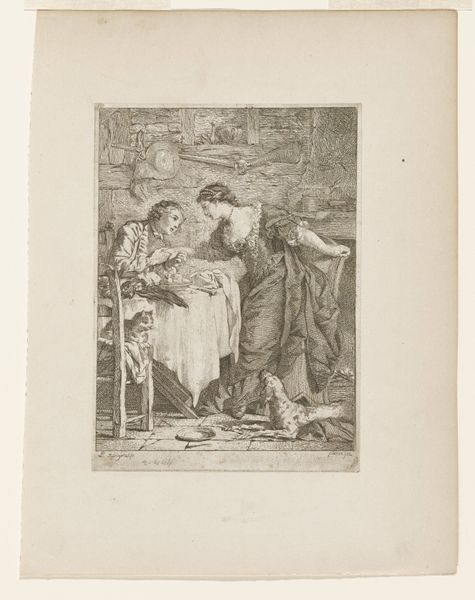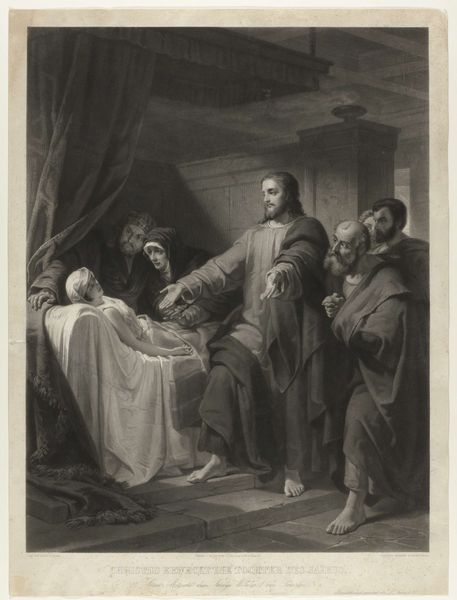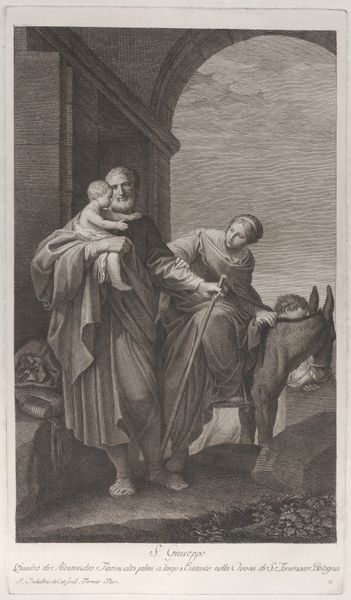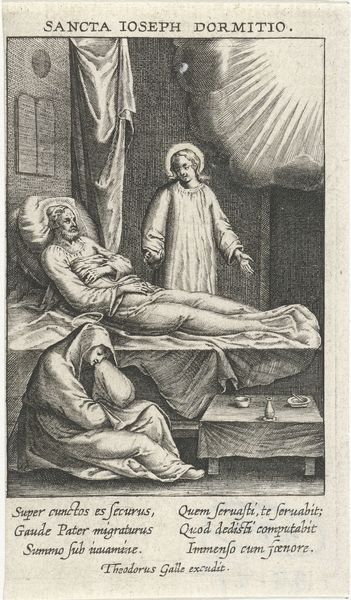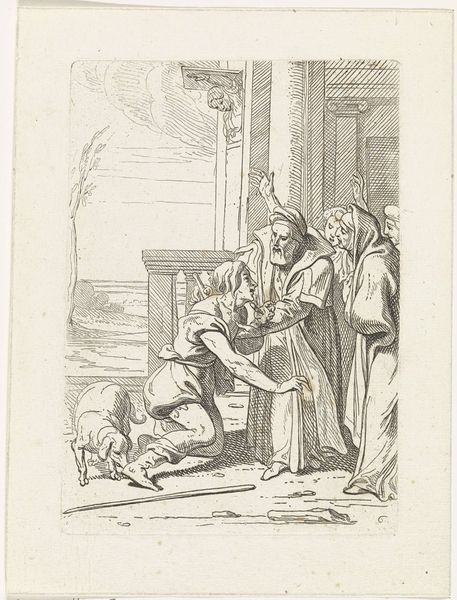
print, engraving
#
narrative-art
#
baroque
#
ink paper printed
# print
#
old engraving style
#
figuration
#
history-painting
#
engraving
Dimensions: height 300 mm, width 230 mm
Copyright: Rijks Museum: Open Domain
Curator: Pietro del Po’s engraving, "Bewening van Maria en Johannes," roughly translated to "The Lamentation of Mary and John," made sometime between 1620 and 1692, presents us with a poignant scene. Editor: My first impression is one of stark desolation. The pallid figures, etched with such delicate lines, feel drained of all vitality, mirroring the gravity of the subject. Curator: Observe how del Po employs a limited tonal range, relying on the precision of line to delineate form and evoke emotion. Note, too, how the composition leads our eyes: from Mary’s downcast gaze, to John's supportive posture, to the still form of Christ. Editor: And consider what it meant to depict Mary and John in such raw grief, in an era when the Church often favored more triumphant imagery. This deeply human portrayal highlights the emotional toll of loss, reminding us of the vulnerability inherent in both the divine and human condition. Did del Po’s own lived experiences inform this interpretation? Curator: The effectiveness of the work lies precisely in its balance between formal restraint and emotional intensity. The artist creates visual interest through varied line weights and hatching, notice that subtle gradations model the figures. Editor: Absolutely. The artist challenges the social norms by positioning female suffering in a context for reverence. Grief, often associated with the feminine sphere, is presented here as profound and central. Del Po challenges and affirms traditional roles simultaneously by portraying figures experiencing grief at Christ’s death while simultaneously emphasizing their active responses: Mary’s sorrow, and John’s caretaking position, suggesting agency within constraints. Curator: The use of engraving as a medium also impacts our interpretation. The precise, repeatable nature of the print contrasts with the raw emotion depicted. Editor: Perhaps emphasizing how grief, while intensely personal, is also a universally shared human experience, reproduced across time and culture. Curator: Ultimately, this work succeeds through its meticulous construction and the carefully wrought emotions conveyed within a traditional allegorical context. Editor: It makes you consider how artistic interpretation, as a form of cultural reflection, evolves depending on political or artistic discourse.
Comments
No comments
Be the first to comment and join the conversation on the ultimate creative platform.
